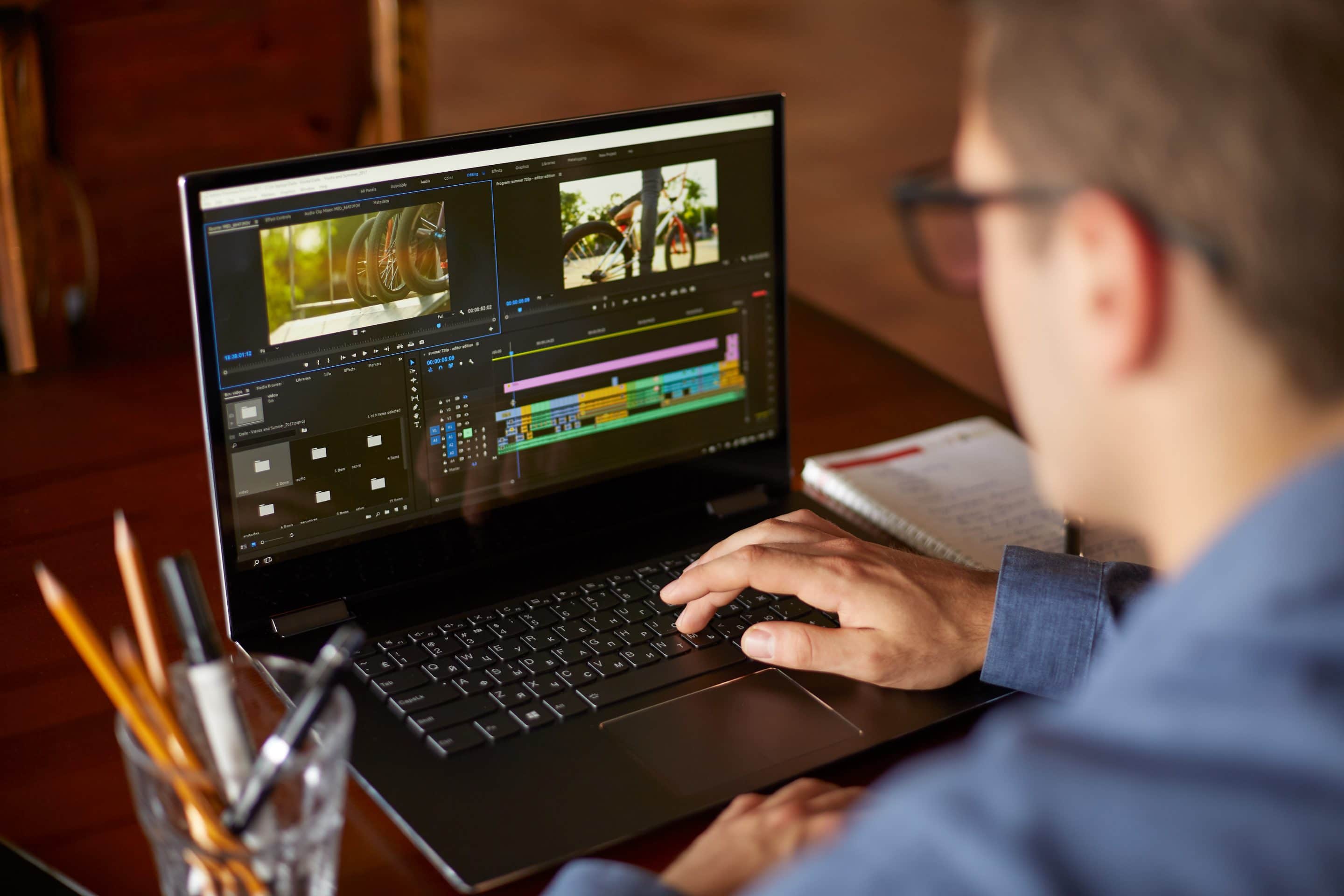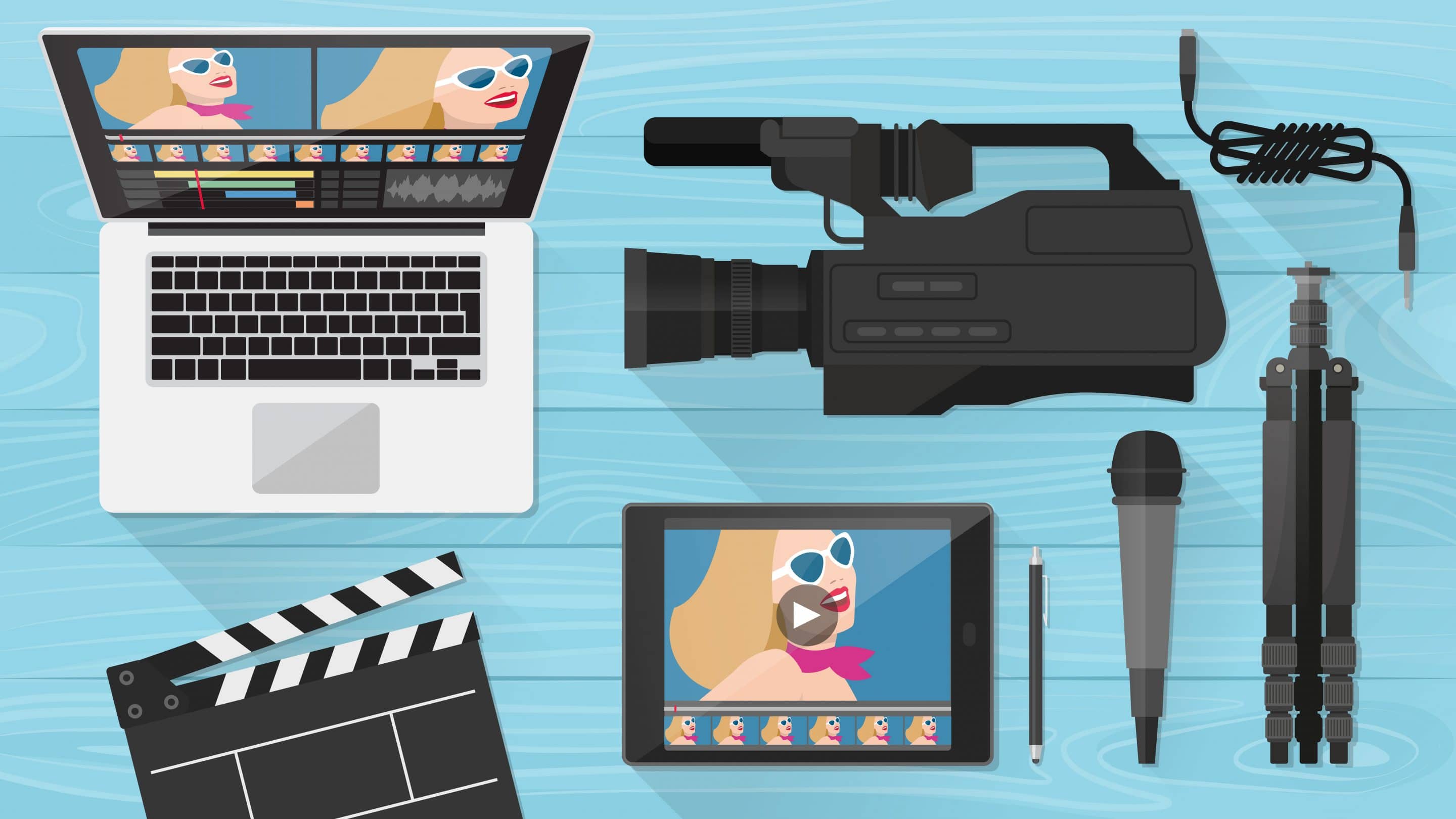Many online brands utilize videos in their social media strategy. However, without proper knowledge, video editing can become a huge time commitment that can leave you extremely frustrated. Before we get into specifics about effective video editing for your social media strategy, let’s start with some general knowledge about video editing.
General Video Editing Tips
First, it will take time, patience and dedication to create a video you are happy with. If there is one piece of advice any video editor will tell you, it’s that technical difficulties are just a part of life. As sure as the sun rising every day you WILL encounter some issues with any type of editing software you use, whether it be Adobe Premiere of Final Cut Pro. The only thing you can do is stay calm and deal with one thing at a time. Make sure you save often and backup your work on a daily basis. This step may seem tedious, but it can be a lifesaver down the line.
Here are three other helpful tips about how to cut down on technical issues when video editing.
- Only have the video editing program open; this will help your computer run more efficiently.
- Don’t do too much at once; finish one task before moving on to the next.
- When you can, do your video editing on a desktop; if you have to use a laptop, make sure it is plugged in so you can dedicate full power to editing.
Now that we have covered some video editing basics, let’s dive into specifics about social media marketing with videos.
Define Your Video’s Purpose & Create a Social Media Plan
The first two things you need to do when it comes to video editing and content creation, according to Business 2 Community and Hootsuite, are decide the video’s purpose and develop a plan.
Just like any social media content you create, it’s important to start with a basic plan or outline and work at it until you’re happy with what you have. This is a great way to eliminate ideas that aren’t feasible or would be too costly.
Even though you create a plan, it’s important to note this might change over the course of production and post-production. The point is to develop a roadmap so you know where you’re going and what type of video will get you there.
After you are satisfied with your plan, decide what the purpose of your video is. Is it an ad? Is it an announcement? An introduction to your business’ products or services? Depending on the purpose, your video’s core message will look and feel vastly different.
One way to filter out unnecessary ideas and ensure the best final video is to create a storyboard. This will help you know exactly what shots you need to get when you start filming. Video Marketing for Dummies describes a storyboard as, “A piece of paper with boxes drawn on it that shows how every shot in a marketing video will be visually represented. Shots can be quite elaborate creations or simply rough sketches. The purpose is to outline each shot to see how to help the director, the camera person, and the editor put the video together.”
Also, take the time to learn about your audience. What do they want to see and what will they find compelling? What do you want them to take away from the video? How will they benefit from your product or service? Connecting with your target audience is the whole point, so keep them front and center during the entire process.
When you are ready to film, keep these seven tips in mind:
- Do not rely on post-production video editing to fix problems; post-production is for enhancements, not fixing
- Film more video than you need; it is always better to have extra content than to need to go back and reshoot
- Film horizontally if you are using your phone’s camera (never film vertically)
- For crisp audio, use an external mic
- Keep the camera steady; ideally, use a tripod or a gimble stabilizer for your phone to reduce movement
- Make sure there is enough natural light in the video
- Look at the entire shot; make sure the background isn’t detracting from the focus in the foreground
How to Optimize Video for Your Social Media Platforms While Filming
One of the most important things to do when video editing for social media marketing is to optimize for the platform you are planning to post the video on.
For example, Instagram allows videos, but it has very different dimensions than YouTube or Facebook. Instagram also allows you to post videos in three areas of the platform:
- The standard feed
- As a Story
- On Instagram TV (IGTV)
Instagram videos can only be 6o seconds or less when you’re posting it on the main feed, but they can go all the way up to 10 minutes on IGTV.
On IGTV, the dimensions are flipped from what is a standard ratio of 16:9 to 9:16, meaning most videos are not formatted correctly. That means you will have to create two video files – one in each of the aspect ratios – if you plan to post the video on both areas of Instagram. This is easier to accomplish if you shoot the video vertically, and then again horizontally, as the only time you should use vertical video is for IGTV or a Story.
Of course, Instagram isn’t the only social media platform where you can post videos. However, as you can see in the example above, it’s best to determine the social media channels you plan to use and look up the specific dimensions the site recommends so you can properly record everything you need before starting the video editing process.
As you complete filming, gather all the assets available to you and record more video than you think you’ll need; it’s better to have something extra and not need it than to need something and not have it.
How to Design Graphics for Your Social Media Videos
When you are using color graphics in your videos, consult Canva’s Color Wheel so you can use and find complementary colors. For example, blue is yellow’s complement and green is red’s.
Using complementary colors will help your video pop and grab your viewers’ attention in a way that’s pleasing to the eye. You can also use the color correction tool to edit which colors are being used in your video. To learn more about color theory, refer to this article.
Finally, end every video with an end card that shows your company’s information, such as your website address and phone number, and other resources you may want the viewer to access.
Another key component of a successful social media video is an effective attention grabber. Whether it be a graphics or music (or both!), the public’s attention span is shorter than ever; if you can’t grab them in the initial ten seconds of your video they will probably be lost.
In the same vein of thinking, cut to the chase when video editing. Don’t add unnecessary slides or extra information when the viewer doesn’t need it. Forbes advises never forcing your product or service onto your viewer. You need to connect their needs to your solution or product in an organic way. Then they will decide if they need the product or service because no matter how good your video is, you can’t make someone buy into your business, but you can show them why they should.
Reminder: Make sure you are using the video editing software you have as a tool, not the solution. Video editing is great, but it cannot solve all of your problems. Video editing is a way to enhance your message and can help you take your video to the next level, but it cannot take bad raw footage and make it well-edited footage.
A fantastic free online video editor we enjoy is Canva Video Editor. With this tool users can craft their own videos using hundreds of templates to choose from.
Include Subtitles When Video Editing
When video editing, it’s important to use subtitles. Even though this process can be exceedingly tedious, it has tremendous benefits. According to Hootsuite and Business 2 Community, most video watching is done while viewers are at work, so having subtitles makes your video easy to watch even when the sound is off. Subtitles also make it accessible to those with hearing impairments.
Adding captions has a positive influence on SEO, too. Videos with captions tend to rank higher in Google results, increase engagement and boost search traffic. Captions are to video as meta descriptions and keywords are to a website.
Also, do NOT use built-in caption programs on video publishing sites like YouTube; their captions are very often incorrect and will hurt your brand. I also recommend you stay away from rolling blocks of text and use text (other than captions) as sparingly as possible. People watch videos for the visual – not to read.
Tips for Enhancing Your Social Media Video’s Audio
When you record audio, start and end with a clap (clap-sync). This makes it easy to know exactly where you want your audio to start and you won’t have to waste time scrubbing through the audio file. This is especially helpful if you are capturing audio and video separately as you will need to sync up the audio and video to be exactly the same; this is possible without a clap-sync but can become an arduous process.
When it comes to editing audio, you’ll want to keep your main volume levels (voice or dialogue) bouncing between -12 and 0 on the levels bar. For secondary audio (music or effects), keep it between -20 and -12. You will have to listen to your audio and adjust accordingly, but this is a good rule of thumb to follow.
Keep Your Video’s Length Short and Sweet
Keep your videos short, concise and deliver value. As discussed before, attention spans are remarkably short these days. To ensure you capture and keep your audience watching the entire length of your video on social media, it’s best to make it a minute or less for sites like Facebook, Twitter, Instagram, and LinkedIn, and maybe as long as 10 minutes maximum for a site like YouTube or IGTV.
You may be tempted to use fun transitions in your videos; this can be a distraction to your audience, though. Use cut, fade to black and dissolve transitions most often to ensure the flow for the video, and reserve fancy transitions for times it serves a specific purpose, or if your video’s message requires a more artistic option. When you are cutting your video, make sure you cut on the action, showing how your scene is progressing.
That being said, in a social media video, you shouldn’t have to cut between too many shots. With the accessibility and ease of creating videos these days, social media users are often happy with a short, simple video they can watch quickly and easily.
Video has the benefit of being highly engaging, but this also means people expect more from them. In Forbes’ article about video editing, the author talks about being open and honest with your viewer and giving them advice or information, they can use practically.
Remember the Call to Action When Video Editing
Lastly, end your video in a single call to action. How do you want viewers to respond to your video? Make sure you tell them! Whether it be a prompt to buy a product, an incentive to visit your website for more information, or an invitation to schedule a consultation, ending your video with a strong and clear call to action gives your audience something to do next and encourages them to stay connected and learn more about your company.
When you are making a video remember to be open to other people’s ideas and constructive criticism. When you spend a large amount of time video editing it’s easy to feel attached to it, however, you are making this video for your audience and supportive suggestions may help you look at your video in a different light.
Video editing is complex and can be time-consuming, but when done correctly it can be incredibly beneficial to your business. If you need help or advice on drafting or curating quality, relevant video content – or any type of custom content for your brand – contact Three Girls Media today! We can help!
Special Offer:
Sign up for a complimentary consultation during December and receive an Annual Marketing Planning Guide valued at $475! We offer a 30-minute phone consultation with our CEO, and can answer your questions and discuss your specific marketing needs - no strings attached. Call 408-218-2391 or contact us today to arrange your consultation!






